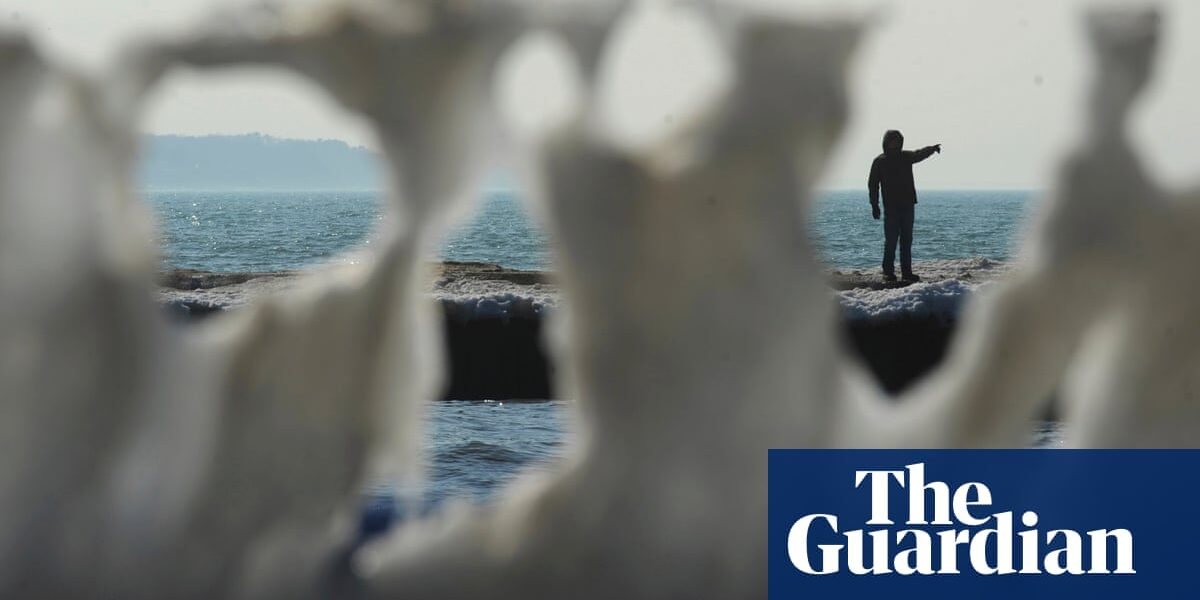The average ice cover on the Great Lakes has decreased to just 6%, which is one of the lowest levels ever documented.

Last month, the National Oceanic and Atmospheric Administration (Noaa) reported that the average ice cover across the five Great Lakes was only 6%. This is one of the lowest amounts of ice recorded in January since data collection began 50 years ago.
The Great Lakes, consisting of Superior, Huron, Michigan, Erie, and Ontario, are situated along the border between the US and Canada. They are linked by a series of smaller lakes and rivers, covering a total area of 95,000 square miles. This makes it the biggest freshwater system globally.
Although minor fluctuations in ice coverage from year to year are expected, experts warn that the melting of ice and increasing water temperatures are primarily caused by global warming and could exacerbate if prompt measures are not implemented.
Professor Sapna Sharma, an expert in how environmental factors affect lakes at York University in Toronto, stated that increasing air temperatures are causing accelerated melting of ice and warmer water temperatures. If global warming continues, approximately 215,000 lakes may no longer freeze annually and around 5,700 lakes may never regain their ice cover by the year 2100.
The Great Lakes contain over 20% of the world’s freshwater, and Lake Superior holds half of that amount as the largest and northernmost of the five lakes. Data on ice coverage indicates a 25% decrease across the entire basin, and a decrease in the number of days with frozen water since 1973.
James Kessler, a physical scientist and ice expert at Noaa’s Great Lakes Environmental Research Lab, stated that there is a trend of a 5% decrease in average ice cover every decade. While this percentage may not seem significant, it represents a significant decline.
Unfrozen lakes during winter result in increased rainfall rather than snow, causing various environmental, cultural, and societal effects.
Certain regions have been impacted more severely than others. Historical data from 1857 indicates that multiple bays on Lake Superior would freeze over annually until around 1997. However, due to the increasing effects of global warming, some of these bays have not frozen at all during the winter season.
According to Sharma, the Great Lakes are currently seeing a significant decrease in ice coverage, with some areas completely devoid of ice. If steps are not taken to reduce greenhouse gas emissions, larger and deeper lakes such as bays in Michigan and Superior may lose their ice cover permanently by the 2060s.
The extensive reach of the water system causes events in the Great Lakes to impact beyond its borders. In years with minimal or absent ice coverage, the lakes endure increased evaporation, warmer temperatures, and reduced oxygen levels. This makes it more challenging for coldwater fish native to the area to flourish and has a ripple effect on the entire ecosystem. The heightened evaporation also results in lower water levels and decreased wetland areas in the nearby regions, placing additional strain on animal species already facing difficulties in finding sustenance and adjusting to rising temperatures.
The Great Lakes region heavily relies on snow and ice for its cultural traditions and tourism. Visitors can enjoy various outdoor activities such as tobogganing, skating, dog sledding, and ice fishing, while the snow removal industry generates billions of dollars. However, in milder winters, these recreational opportunities are often cancelled, causing a decline in tourism and an increase in drownings due to unsafe ice conditions.
Reduced ice levels additionally allow for numerous cargo vessels to travel through the Great Lakes throughout the year, resulting in a decreased need for ice breakers to clear shipping routes. This results in cost savings for the commercial shipping sector.
Source: theguardian.com


